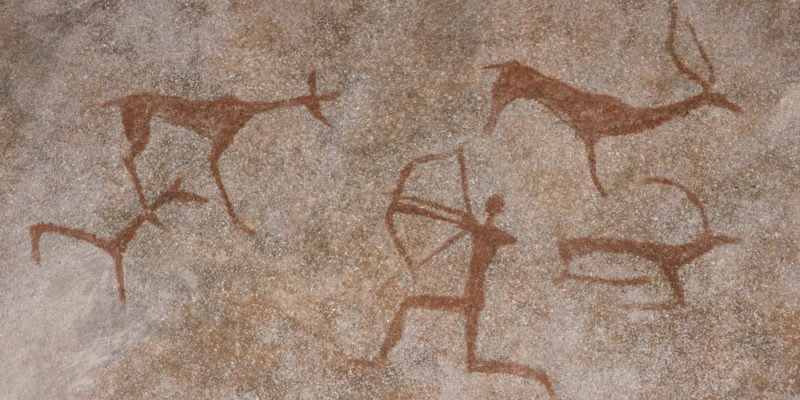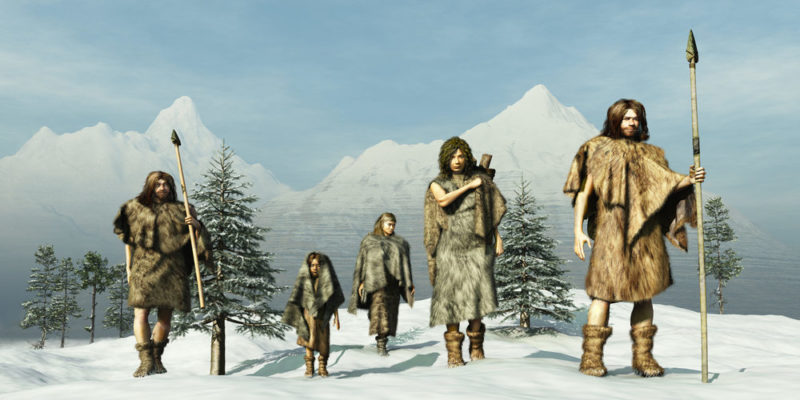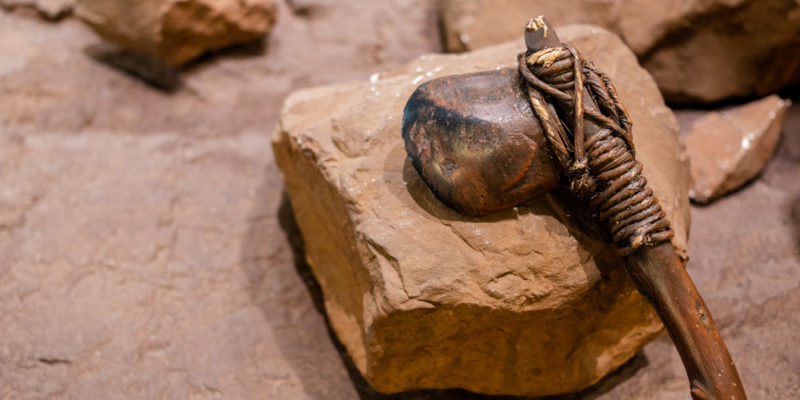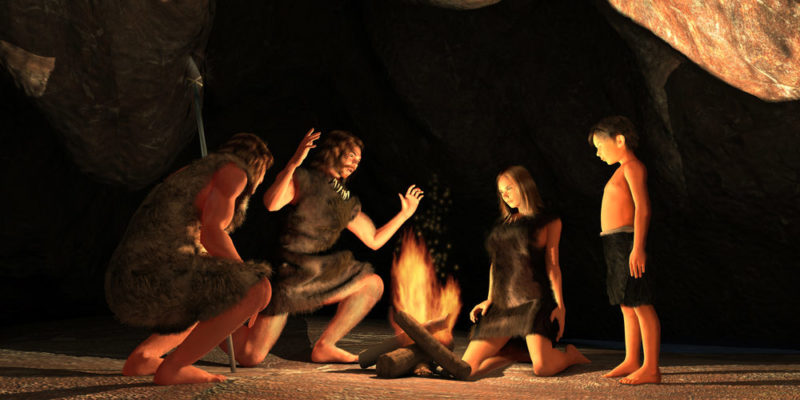We explain what the Paleolithic is and what are the stages of this period. In addition, its general characteristics and social development.
What is the Paleolithic?
 The word Paleolithic comes from the Greek and means "ancient stone". It refers to the period of human development of the ancient Stone Age that preceded the Mesolithic (which also corresponds to the Stone Age , but to the middle stage). The third and final stage of this Stone Age was the Neolithic period .
The word Paleolithic comes from the Greek and means "ancient stone". It refers to the period of human development of the ancient Stone Age that preceded the Mesolithic (which also corresponds to the Stone Age , but to the middle stage). The third and final stage of this Stone Age was the Neolithic period .The Paleolithic began with the appearance of man about 3 million years ago and lasted until 9000 BC. It was the longest stage of the Stone Age, which was characterized by the use of very rudimentary tools, such as chipped stone.
Stone tools were the first cultural artifacts that historians used to reconstruct human life during the Paleolithic. In addition, vestiges of cave paintings were found in the caves , with scenes of fruit gathering and hunting practices carried out in groups.
Paleolithic stages
 The Paleolithic period is divided into three parts:
The Paleolithic period is divided into three parts:
- Lower Paleolithic: It is the first part that spanned from 3 million years ago to 250,000 BC. C. Humans were nomads , they took refuge in caves to protect themselves from the cold and wild animals . The great contribution to humanity was the discovery of fire .
- Middle Paleolithic: It is the second stage that spanned from 250,000 BC. Until 30,000 a. Continuously evolving humans reached the Neanderthal phase , characterized by their sophisticated intelligence and by improving the weapons they used for hunting.
- Superior Paleolithic: It is the third stage that spanned from 30,000 BC. Until 10,000 a. C. The greatest amount of evidence of artistic development was found (such as cave paintings and small clay or bone sculptures ). The evolution of the human reached the phase of Cro-Magnon man, who had a greater capacity to communicate.
Paleolithic characteristics
 The Paleolithic period was characterized by:
The Paleolithic period was characterized by:
- The populations were nomadic and used to mobilize in small tribes or small groups.
- The main activities were gathering fruits and hunting.
- The discovery of fire occurred during the Lower Paleolithic.
- Man took refuge in precarious huts and caves (hence the origin of the name "cavemen" that humans also received from this period).
- The first rudimentary tools were made, made from broken stones. Then they improved and included materials such as wood and bone.
- Art emerges as evidence of cultural development.
- Fishing was practiced, developed by Neanderthal man (during the Lower Paleolithic).
- The language primitive allowed the development of social structures.
Social development in the Paleolithic
 During the last stage of the Paleolithic, humans developed the ability to communicate and, as a consequence, managed to organize themselves into populations with larger members and practiced the division of roles and functions within the family clan .
During the last stage of the Paleolithic, humans developed the ability to communicate and, as a consequence, managed to organize themselves into populations with larger members and practiced the division of roles and functions within the family clan .The men went hunting and took care to protect the women and children. The women took care of taking care of the children , gathering fruits and working the skins of the animals that they used as shelter and for the construction of houses.
Paleolithic beliefs
Various theories regarding religious and spiritual behavior emerged from the Paleolithic period . It is believed that the first Neanderthal humans could have developed a sophisticated behavior related to the deceased and funeral ceremonies.Evidence has been found that could be related to the burial of their dead to protect them from the destruction of predatory animals. On occasions, human remains were even found along with what could be offerings (remains of animals and art statuettes that they themselves made).
Luke is passionate about fostering student involvement and connection. He studied psychology for his major and likes learning about the past. Luke aims to specialize in artificial intelligence and cybersecurity. .
Leave a reply
Your email address will not be published. Required fields are marked *Recent post

Sport: What Is It, Types, Risks, Features, Characteristics and Examples
September 23, 2021

Dogs: Emergence, Features, Characteristics, Feeding and Breeds
September 24, 2021

Story: Definition, Elements, Structure, Features and Characteristics
September 24, 2021

Essay: Definition, Structure, Features, Characteristics, How to Do It
September 24, 2021
